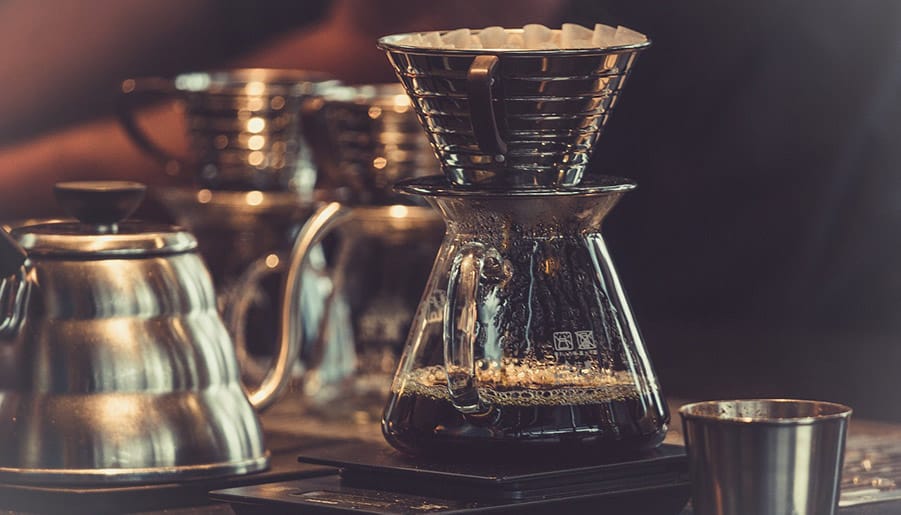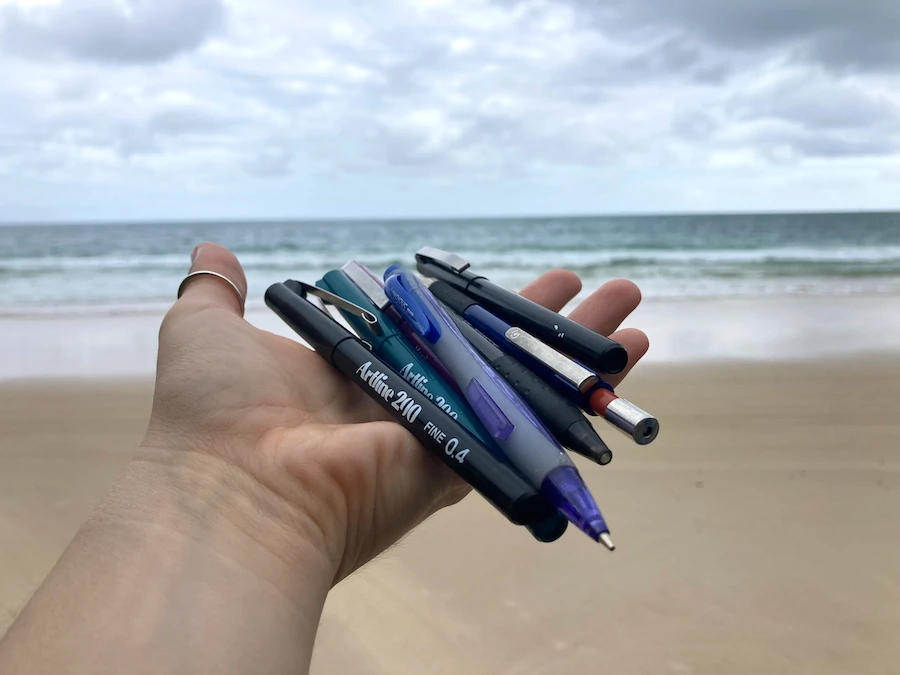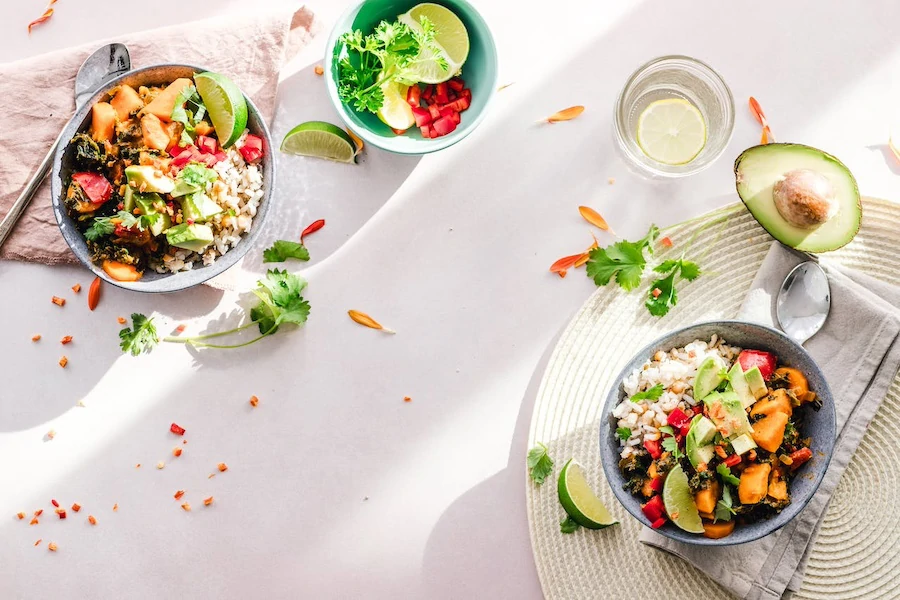
Coffee is a multi-billion dollar big business industry that’s steadily on the rise. As a crucial part of the global economy, it’s one of the world’s most traded products, only second in value to oil. With the high rate of consumption and production globally, it’s important to recognize the overall environmental impact that coffee has.
I’ve created this guide so you can be more aware of where your coffee comes from, how it’s produced, and how you can make your coffee experience eco-friendly.
Not All Beans Are Created Equal
Traditionally, coffee beans have been grown in large forests throughout the world, complete with natural ecosystems of plants and wildlife. Tree canopies provide much-needed shade and cover for budding coffee beans. But an increase in demand for coffee around the 1970s has drastically changed the way it’s grown.
In order to yield a higher profit, coffee producers grow their coffee in low-shade environments, utilizing most of the sun. This means forests are cut down, resulting in soil erosion and increased blights and pests. Entire ecosystems and habitats for wildlife are completely destroyed.
Fewer insect-killing birds in the habitat mean farmers need to use chemical-based pesticides on their beans. With no roots or leaves to naturally enrich and fertilize the soil, farmers also need to use chemical-based fertilizers. The “sun-grown” method also requires a ton of water, more than 140 liters are required to produce a single cup of coffee!
This intensive method of coffee production also results in a lower quality coffee bean. Perhaps you have tried this bitter-tasting coffee bean “robusta” which is typically reserved for bulk coffee producers that make canned or instant coffee you buy at the supermarket. Due to the increased climate unpredictability throughout the world along with no-shade direct sunlight coffee production, the quality of coffee bean production is lower than it’s ever been.
Many upscale coffee chains use the coffee bean “arabica”, which is most commonly grown in the shade. But with the large increase in the coffee industry in the 1990s, the percentage of coffee farms with shade has decreased from 43 percent to 24 percent. It’s estimated that approximately 40 percent of coffee farmland contains no shade whatsoever. The only way to be sure your coffee beans are grown ethically is to look for brands that carry certification such as “Fair Trade” which holds both the coffee producers and buyers to strict industry standards.
Coffee Brewing and Consumption
The coffee industry not only has a severe environmental impact during the growth and production but also the brewing and consumption by people like us – the consumers. Most households now have single-serve coffee machines with pods or capsules which are quick and convenient for consumption. Unfortunately, they also produce 10 times as much solid waste as a conventional drip coffee maker. Pods are usually made from aluminum and plastic making them very difficult to recycle. Recently, some brands have made an eco-friendly push to make their pods and capsules with compostable materials, but this is not the case for all.
Think about when you go to your favorite coffee chain and order up your favorite coffee. How much paper or plastic is used? The truth is more than 16 billion paper coffee cups are consumed each year, and that’s just paper. Many coffee chains serve their cold drinks in single-use plastic cups complete with a lid and plastic straw.
The good news is that due to consumer demand, there has been a push by some big coffee chains like Starbucks to reduce its environmental impact in different ways:
- Disposable cups made from compostable materials.
- Eliminating the plastic straw.
- Offering discounts for customers who bring a reusable cup.
- Sourcing their coffee according to ethical guidelines.
- Reinvesting profits into local communities where coffee is produced to promote sustainable production.
- Reducing water use in stores for the brewing process
Now, this all sounds ideal, but it’s not the large corporations doing this for the greater good, it’s to appeal to customer demand. Consumers are now standing up and demanding their coffee to have a low environmental impact and be ethically produced.
Exploitation
Of the billions of cups of coffee drunk each day, only a small percentage of the profits actually reach the farmers and workers who produced it. Some farmers live in impoverished conditions, so they are easily exploited by big business buyers. Laborers, including women and children, are also exploited by reaching very low wages for back-breaking work.
But it’s not just the farmers and workers that are exploited but some animals are harmed during coffee production. In Indonesia, Asian Palm Civets, a cat-like mammal, are forced into unsanitary cages and fed coffee cherries in order to produce the world’s most expensive coffee, Kopi Luwak.
After passing through the digestive tract where enzymes change the structure of proteins in the coffee beans, the acidity is removed resulting in a smoother flavor. These animals are subjected to harsh conditions and force-fed an unnatural diet of only coffee cherries for the sole production of an expensive cup of coffee. Kopi Luwak: cruelty in every cup.
What You Can Do
Fortunately for you as the concerned coffee consumer, there are ways you can make your coffee more eco-friendly. Here are four simple tips:
1. Buy Fair Trade & Organic Coffee
An eco-friendly coffee brand will be clearly labeled with a certification such as “Fair Trade” to signify they uphold the strict standards of buying coffee that is ethically produced without any farmer or labor exploitation, with minimal environmental impact. Other certifications such as Rainforest Alliance or USDA Certified Organic signify the coffee beans were grown naturally without the use of pesticides.
2. Use a Reusable Cup
If you love to drink your coffee on the go, invest in a reusable coffee cup or mug. Some coffee chains will even give you a discount for filling up with a reusable cup. This will spare you from using a disposable paper or plastic cup. Reusable coffee cups are readily available from most online retailers in a variety of eco-friendly materials such as stainless steel, glass, and even bamboo. If you want to go the extra eco-friendly mile for your coffee-sipping, you can also add a reusable straw.
3. Compost Your Coffee Grounds
Did you know you can compost your coffee grounds? Composting is the process by which organic matter is biodegraded and returned to the soil. You can easily start a compost heap in your garden or compost through your local municipality.
4. Reusable Coffee Filter
If you love using your conventional drip coffee, you can save yourself some cash while preventing additional waste. Reusable coffee filters are made in different eco-friendly materials and come in many sizes that will fit with your drip coffee maker.
A Quick Guide to Manual Brewing
One of the best ways to make your coffee more eco-friendly is to manually brew your own coffee at home. There are several quick and easy ways to do this, each giving your coffee a unique flavor while adding some fun to your daily coffee experience.
Pour Over Coffee
Using a simple coffee cone and a paper filter, hot water is poured evenly over coffee grounds. The coffee slowly drips into a pot, this usually only takes a few minutes. The shape of the cone and the filter will influence the flavor of the brewed coffee with some filter papers being lighter and heavier than others.
Press Coffee
The French press is a consistent method to manually produce quality coffee at home. Ground coffee is soaked into the press pot and steeped, and strained in hot water. This gives the brewed coffee a rich and dense flavor-packed with caffeine.
The Aeropress is similar to the French press, where a filter sits in a coffee basket at the bottom of the brewing chamber filled coffee grounds where they steep in hot water. Using air pressure, a plunger pushes down on the chamber to force the brew through the filter and into your coffee cup. A very modern and handy device that produces a full-bodied coffee.
Percolated Coffee
The Stovetop Moka Percolator originated in Italy, the Moka Pot uses steam pressure from boiled water in the lower chamber to pass up through the filter and coffee grounds in the middle chamber. The brewed coffee then fills up the top chamber to be poured out and served. Available in many sizes and intended for rich-tasting espresso that packs a punch.
Vacuum Coffee
A Siphon Coffee Brewer more complicated process, the siphon starts with coffee grounds in an upper chamber. Vapor pressure forces hot water through a tube to immerse the coffee. After the heat is removed, the coffee then filters back down into the bottom chamber. This method is more vintage but also a fancy and fun way to brew that produces light and mellow tasting flavor.
Final Thoughts
More than 400 billion cups of coffee consumed every year – that’s more than 1.1 billion per day! Now with that much consumption, you may think, how can just one person make a difference?
Well, when consumers start making more eco-friendly choices, the brands and producers start to follow. Corporate coffee chains start to change their approach and become more eco-friendly and ethical. The coffee industry is slowly changing for the better but can also be changed by you.
If you are interested in trying out a new coffee brand, I encourage you to do some background research on where they get their beans from and how ethical and environmentally sustainable they are. I hope this guide has been helpful to you and may you enjoy a more eco-friendly coffee experience!



